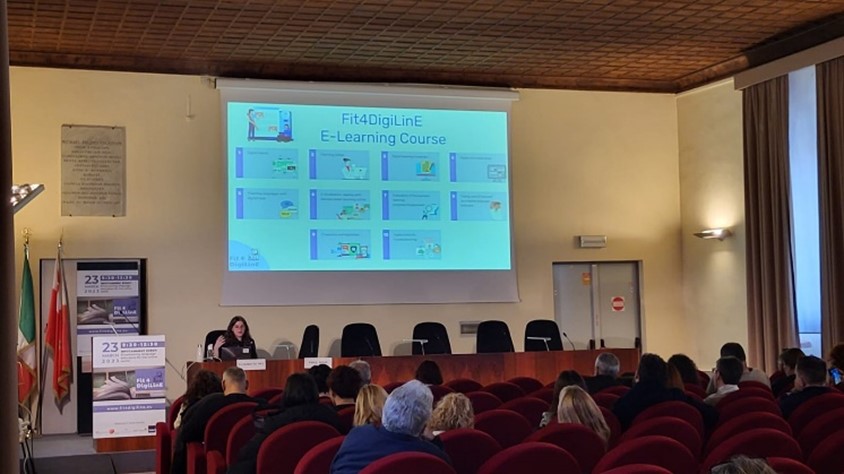Connectivism: A Learning Theory for the Digital Age
By George Siemens
Editor´s note: Connectivism should not be confused with constructivism. George Siemens, the author of the article below, advances a theory of learning that is consistent with the needs of the twenty first century. His theory takes into account trends in learning, the use of technology and networks, and the diminishing half-life of knowledge. It combines relevant elements of many learning theories, social structures, and technology to create a powerful theoretical construct for learning in the digital age. The article was edited and shortened for this website. For the full article go to http://www.itdl.org/Journal/Jan_05/article01.htm (13.1.2023)
Introduction
Behaviorism, cognitivism, and constructivism are the three broad learning theories most often utilized in the creation of instructional environments. These theories, however, were developed in a time when learning was not impacted through technology. Over the last twenty years, technology has reorganized how we live, how we communicate, and how we learn. Learning needs and theories that describe learning principles and processes, should be reflective of underlying social environments. Vaill emphasizes that “learning must be a way of being – an ongoing set of attitudes and actions by individuals and groups that they employ to try to keep abreast of the surprising, novel, messy, obtrusive, recurring events…” (1996, p.42).
Learners as little as forty years ago would complete the required schooling and enter a career that would often last a lifetime. Information development was slow. The life of knowledge was measured in decades. Today, these foundational principles have been altered. Knowledge is growing exponentially. In many fields the life of knowledge is now measured in months and years. Gonzalez (2004) describes the challenges of rapidly diminishing knowledge life:
“One of the most persuasive factors is the shrinking half-life of knowledge. The “half-life of
knowledge” is the time span from when knowledge is gained to when it becomes obsolete.
Half of what is known today was not known 10 years ago. The amount of knowledge in the
world has doubled in the past 10 years and is doubling every 18 months according to the
American Society of Training and Documentation (ASTD). To combat the shrinking half-life
of knowledge, organizations have been forced to develop new methods of deploying
instruction.”
Some significant trends in learning:
- Many learners will move into a variety of different, possibly unrelated fields over the course of their lifetime.
- Informal learning is a significant aspect of our learning experience. Formal education no longer comprises the majority of our learning. Learning now occurs in a variety of ways – through communities of practice, personal networks, and through completion of work-related tasks.
- Learning is a continual process, lasting for a lifetime. Learning and work related activities are no longer separate. In many situations, they are the same.
- Technology is altering (rewiring) our brains. The tools we use define and shape our thinking.
- The organization and the individual are both learning organisms. Increased attention to knowledge management highlights the need for a theory that attempts to explain the link between individual and organizational learning.
- Many of the processes previously handled by learning theories (especially in cognitive information processing) can now be off-loaded to, or supported by, technology.
- Know-how and know-what is being supplemented with know-where (the understanding of where to find knowledge needed).
An Alternative Theory – Connectivism
Including technology and connection making as learning activities begins to move learning theories into a digital age. We can no longer personally experience and acquire learning that we need to act. We derive our competence from forming connections. Karen Stephenson states:
“Experience has long been considered the best teacher of knowledge. Since we cannot experience everything, other people’s experiences, and hence other people, become the surrogate for knowledge. ‘I store my knowledge in my friends’ is an axiom for collecting knowledge through collecting people (undated).”
Connectivism is the integration of principles explored by chaos, network, and complexity and self-organization theories. Learning is a process that occurs within nebulous environments of shifting core elements – not entirely under the control of the individual. Learning (defined as actionable knowledge) can reside outside of ourselves (within an organization or a database), is focused on connecting specialized information sets, and the connections that enable us to learn more are more important than our current state of knowing.
Connectivism is driven by the understanding that decisions are based on rapidly altering foundations. New information is continually being acquired. The ability to d壯陽藥
raw distinctions between important and unimportant information is vital. The ability to recognize when new information alters the landscape based on decisions made yesterday is also critical.
Principles of connectivism
- Learning and knowledge rests in diversity of opinions.
- Learning is a process of connecting specialized nodes or information sources.
- Learning may reside in non-human appliances.
- Capacity to know more is more critical than what is currently known.
- Nurturing and maintaining connections is needed to facilitate continual learning.
- Ability to see connections between fields, ideas, and concepts is a core skill.
- Currency (accurate, up-to-date knowledge) is the intent of all connectivist learning activities.
- Decision-making is itself a learning process. Choosing what to learn and the meaning of incoming information is seen through the lens of a shifting reality. While there is a right answer now, it may be wrong tomorrow due to alterations in the information climate affecting the decision.
Connectivism also addresses the challenges that many corporations face in knowledge management activities. Knowledge that resides in a database needs to be connected with the right people in the right context in order to be classified as learning.
Information flow within an organization is an important element in organizational effectiveness. In a knowledge economy, the flow of information is the equivalent of the oil pipe in an industrial economy. Creating, preserving, and utilizing information flow should be a key organizational activity. Knowledge flow can be likened to a river that meanders through the ecology of an organization. In certain areas, the river pools and in other areas it ebbs. The health of the learning ecology of the organization depends on effective nurturing of information flow.
The starting point of connectivism is the individual. Personal knowledge is comprised of a network, which feeds into organizations and institutions, which in turn feed back into the network, and then continue to provide learning to individual. This cycle of knowledge development (personal to network to organization) allows learners to remain current in their field through the connections they have formed.
Conclusion
The pipe is more important than the content within the pipe. Our ability to learn what we need for tomorrow is more important than what we know today. A real challenge for any learning theory is to actuate known knowledge at the point of application. When knowledge, however, is needed, but not known, the ability to plug into sources to meet the requirements becomes a vital skill. As knowledge continues to grow and evolve, access to what is needed is more important than what the learner currently possesses.
Connectivism presents a model of learning that acknowledges the tectonic shifts in society where learning is no longer an internal, individualistic activity. How people work and function is altered when new tools are utilized. The field of education has been slow to recognize both the impact of new learning tools and the environmental changes in what it means to learn. Connectivism provides insight into learning skills and tasks needed for learners to flourish in a digital era.
About the Author
George Siemens is an instructor at Red River College in Winnipeg, Manitoba, Canada. He is enamored with the potential of technology to transform learning and is convinced that existing educational perspectives need to be revised to meet the needs of “today’s students”.
Photocredit: christin-hume@unsplash




